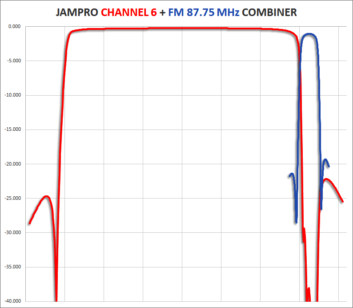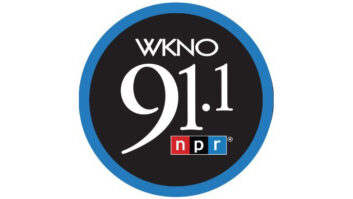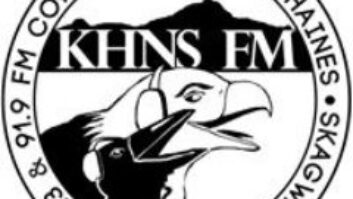This story is from RW’s sister publication TVTech; given the interest among radio stations in this topic, we share it here.

It’s been more than a decade since the first so-called “Franken FM” radio stations took to the air—stations licensed as Ch. 6 TV operations, but using their 87.75 MHz audio carrier to create a standalone FM broadcast service receivable by most FM radios.
Frankens have long been a thorn in the side of legitimate FM operators, and during their existence, the FCC has heard plenty about them. However, as the commission has been pre-occupied with more pressing matters such as spectrum auctions and repacks, little, if any action has been directed at these “mongrel” FMs, with regulators perhaps hoping that they would vanish last year when all LPTVs were forced to either “go digital or go dark.”
However, just like the hydra in Greek mythology, cutting off the head proved not to be the answer in eradicating the beast — others soon grew back, or in the case of Franken FMs, some creative RF engineering work allowed LPTV Ch. 6 licensees to retain analog audio services despite their move to digital broadcasting.
The first of the “next-generation” Franken stations — KBKF-LD, a Venture Technologies property in San Jose, Calif. — took to the air in the spring of 2021, with an FCC-issued STA to operate an ATSC 3.0 TV channel with a “tagalong” FM carrier. In applying for the STA, the station opined that such hybrid digital/analog fashion was covered by the ATSC A/322 standard, with its 3.0 signal “pulled in” to occupy 5.509 MHz of its 6-MHz berth and the rest given over to an FM carrier.
Reaction to ‘NextGen’ Frankens
Currently, there are at least half-dozen of these “second-generation” Frankens, and given the FCC’s apparent willingness to grant STAs coupled with the number of Ch. 6 TV authorizations, others may soon appear.
As such hybridized use of a U.S. DTV channel was not on the table when the NextGen TV standard was being drafted, the arrival of this new wave of Frankens has raised some eyebrows — and questions, just as when the first of the quasi-legal 87.75 FMs popped up back in analog Ch. 6 days.
Several individuals who have been closely involved with the ATSC 3.0 standard were polled for their opinions on this new wave.
[Related: San Diego TV Station Broadcasting Hybrid FM-ATSC 3.0 Signal on TV Channel 6]
“During development of ATSC 3.0, a number of use cases were discussed; many were documented,” said ATSC President Madeleine Noland. “I can’t recall this being one of them. ATSC 3.0 was designed to be flexible and to accommodate a wide variety of use cases and business plans. Beyond that, we cannot say whether this use case falls within the intent of ATSC 3.0, as authorized by the FCC for the U.S.”
Richard Chernock, a long-time contributor to the ATSC 3.0 initiative, stated that “the assumption going forward in the design of ATSC in the U.S. was to establish a full 6 MHz channel. Anything less would reduce 3.0’s capabilities. In my opinion, to use 3.0 for the Franken FMs is to actually lower spectral efficiency.”
However, Chernock added “using ATSC 3.0 technology to carry radio audio is a lot more efficient than to use FM. You could go into any big city with a lot of FMs and you could put them all into one 3.0 channel.”
Chernock said that he would have to do the math to get a precise figure of the number of discrete audio program streams that could be digitally transmitted within an ATSC 3.0 6-MHz channel, but he speculated that it could easily approach 1,000 given the efficiency of today’s codecs.
S. Merrill Weiss, who has been deeply involved in both ATSC 1.0 and 3.0 standards work, feels the jury is still out regarding hybrid DTV/FM transmissions.
“After reviewing all the publicly available technical material that I could obtain on the proposal to combine ATSC digital signals with FM analog signals in a single Ch. 6 emission, I found a dearth of information on either practical operating parameters and systems, or testing of equipment beyond very rudimentary prototypes,” said Weiss.
He expressed several concerns, one of them being the possible impact on 3.0 reception associated with the necessary “squeezing in” of DTV transmission bandwidth to accommodate an FM carrier. “The center frequency of the digital signal would be about 160 kHz below the channel center, and it is not known to me whether consumer receivers being sold can be pulled that far,” said Weiss. “The system may work and be useful, but the information is not available yet to prove it. Once this is released, a judgement on the practicality and utility of such a system may become possible.”
Mark Aitken, ATSC 3.0 “evangelist” and Sinclair Broadcast Group’s senior vice president of advanced technology, remarked that he was not surprised at all about the “second coming” of Franken FMs after last July’s mandatory shutoff of remaining analog LPTVs.
“Actually, I think I played a role in getting them in business with 3.0,” said Aitken, explaining that his own involvement into “stretching” a TV channel’s utility “came about quite some time ago” when he was asked if it were possible to accommodate multiple services within a single television channel’s spectrum allocation.
“The question posed to me several years ago was ‘if I had 6 MHz of spectrum and wanted to offer a narrowband 5G service, could I do that in conjunction with ATSC 3.0?’” said Aitken. “I thought about it and said ‘yeah.’ I demonstrated it later. This was with a narrowband Internet of Things service. I showed that we could carry two separate RF services within a single channel. I probably should have taken out a patent!”
Putting Spectrum to ‘Good Use?’
Asked whether he thought a Franken FM was a legitimate application of the ATSC 3.0 or a misuse, Aitken took a neutral stance.
“I’m not going to argue against folks who want to use technology to their advantage,” he said. “The large number of Franken FMs that existed are from people who are not in the TV business. With the limitations of FM spectrum, they are making use of the FCC rules and channel segmentation philosophy. They’re putting it to good use.”
He explained that by its very nature, ATSC 3.0 is designed to be extremely flexible and extensible. “Numerically — and this is not understood by most folks with regard to ATSC 3.0 — you can get to any number of bandwidths,” Aitken said. This is the reason that the [3.0] bootstrap itself is only 4.5 MHz wide. We wanted to make sure that in the future 5 MHz raster spectrum could be used by others by using the 3.0 standard. This is not ensconced or codified in the standard, as it was feared that the FCC might do an ‘about-face’ and reduce [U.S.] TV channel bandwidth to 5 MHz, so this was dropped out of the specification. A channel bandwidth of 8 MHz is, in fact, codified within the ATSC 3.0 standard and is being tried in India.”
As Sinclair owns a number of Ch. 6 TV stations that could potentially become Franken FMs, Aitken — when asked about such a possibility — said that he didn’t see this happening anytime soon, although the possibility of gaining more utility from television broadcast spectrum is always intriguing.
“I would think there’s no current interest [in Franken FMs],” he said. “Sinclair is not really interested in radio, as its core business is video. I don’t want to preclude this possibility in the future, but right now we’re focused on rolling out ATSC 3.0.”l
Comment on this or any article. Write to [email protected].



